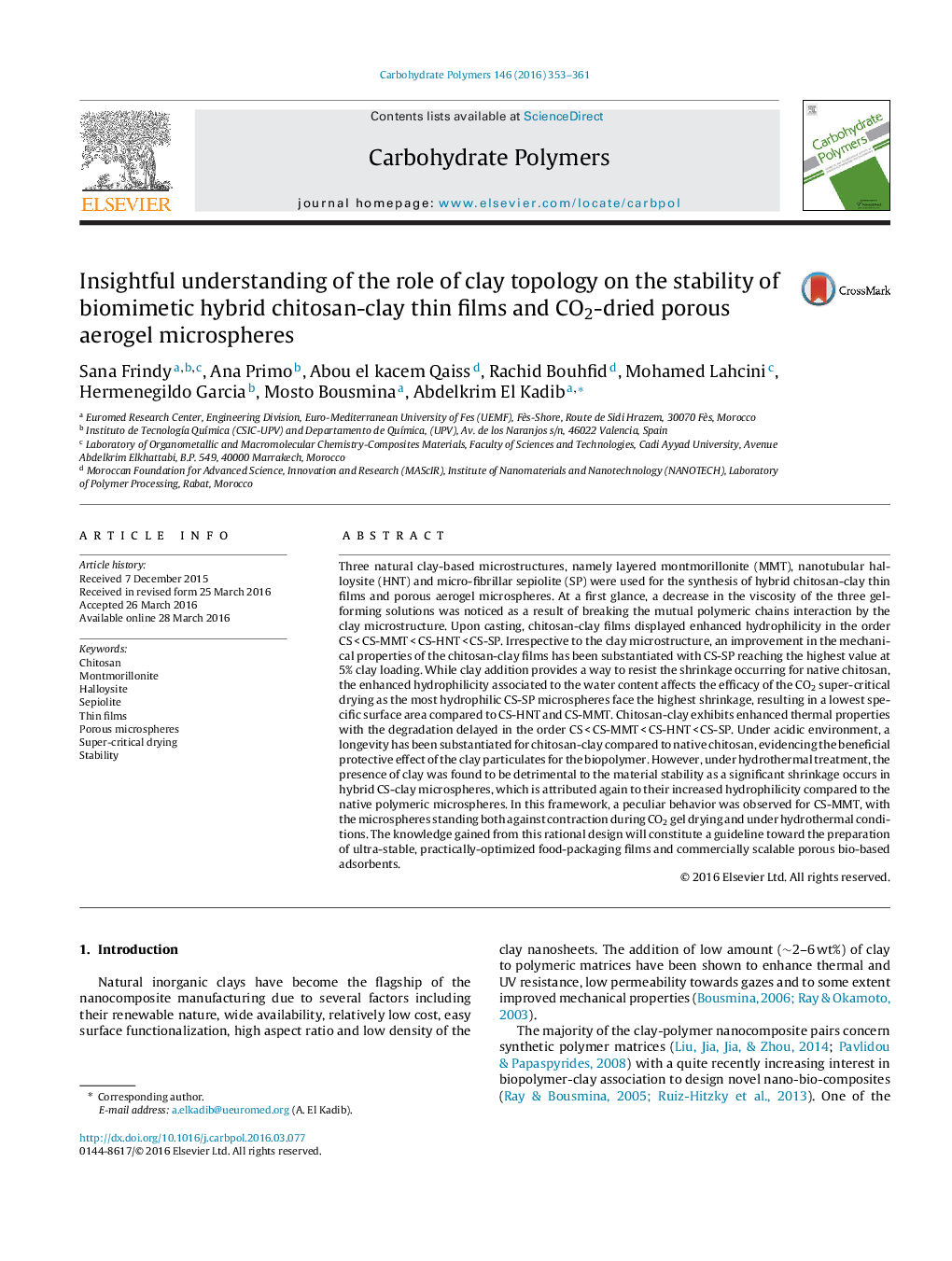| کد مقاله | کد نشریه | سال انتشار | مقاله انگلیسی | نسخه تمام متن |
|---|---|---|---|---|
| 1373986 | 1500612 | 2016 | 9 صفحه PDF | دانلود رایگان |

• Three chitosan-clay hybrid materials were prepared from lamellar montmorillonite, microfibrillar sepiolite and nanotubular halloysite.
• Increased hydrophilicity, thermal properties and mechanical properties were noticed for chitosan-clay materials.
• Resistance against shrinkage during supercritical drying has been noticed for chitosan-clay.
• Increased longevity has been substantiated for chitosan-clay films under acidic treatment.
Three natural clay-based microstructures, namely layered montmorillonite (MMT), nanotubular halloysite (HNT) and micro-fibrillar sepiolite (SP) were used for the synthesis of hybrid chitosan-clay thin films and porous aerogel microspheres. At a first glance, a decrease in the viscosity of the three gel-forming solutions was noticed as a result of breaking the mutual polymeric chains interaction by the clay microstructure. Upon casting, chitosan-clay films displayed enhanced hydrophilicity in the order CS < CS-MMT < CS-HNT < CS-SP. Irrespective to the clay microstructure, an improvement in the mechanical properties of the chitosan-clay films has been substantiated with CS-SP reaching the highest value at 5% clay loading. While clay addition provides a way to resist the shrinkage occurring for native chitosan, the enhanced hydrophilicity associated to the water content affects the efficacy of the CO2 super-critical drying as the most hydrophilic CS-SP microspheres face the highest shrinkage, resulting in a lowest specific surface area compared to CS-HNT and CS-MMT. Chitosan-clay exhibits enhanced thermal properties with the degradation delayed in the order CS < CS-MMT < CS-HNT < CS-SP. Under acidic environment, a longevity has been substantiated for chitosan-clay compared to native chitosan, evidencing the beneficial protective effect of the clay particulates for the biopolymer. However, under hydrothermal treatment, the presence of clay was found to be detrimental to the material stability as a significant shrinkage occurs in hybrid CS-clay microspheres, which is attributed again to their increased hydrophilicity compared to the native polymeric microspheres. In this framework, a peculiar behavior was observed for CS-MMT, with the microspheres standing both against contraction during CO2 gel drying and under hydrothermal conditions. The knowledge gained from this rational design will constitute a guideline toward the preparation of ultra-stable, practically-optimized food-packaging films and commercially scalable porous bio-based adsorbents.
Figure optionsDownload as PowerPoint slide
Journal: Carbohydrate Polymers - Volume 146, 1 August 2016, Pages 353–361